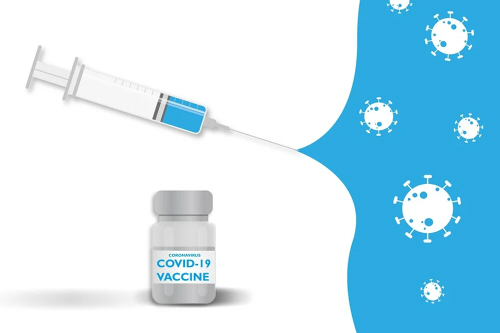The Coming Covid-19 Credit Crunch
新冠信贷紧缩来袭
The COVID-19 crisis did not start as a financial crisis, but it is morphing into one – and a global one at that. The headlines of 2020 have been dominated by news of the pandemic’s spread, record-shattering falls in output, and surges in poverty and the newly unemployed. Behind these disturbing trends a quieter financial balance-sheet crisis is gathering momentum across a broad swathe of countries. The financial fallout from the pandemic does not respect differences by region or income status. Financial institutions are facing (and will face for some time) a marked rise in non-performing loans (NPLS).
新冠肺炎危机开始时并不是金融危机,但它正在演变成一场金融危机——而且是全球性的。2020年的头条新闻全是疫情蔓延、产值骤降破纪录、贫困和新失业人数激增之类。在这些令人不安的趋势背后,一场金融资产负债表危机正跨越许多国家悄然加剧。疫情的这一金融余波对不同区域或收入水平的国家一视同仁。金融机构正面临(并将面临一段时间)不良贷款(NPLS)的大幅增长。
Historically, banking crises emerge after a lengthy expansion in economic activity. Growth is often fuelled by a credit boom and rising leverage. Under the motto of “this time is different”, asset-price bubbles emerge during the biblical “seven fat years” (whether in property, commodities, equity or bonds). As the economic expansion slows and turns into recession, loans made during the good times turn sour. Sometimes balance-sheet problems undermine confidence, and runs on banks and financial institutions turn the crisis into a fully fledged panic. Households and firms attempt to deleverage after the crisis, even as banks adopt tighter lending standards. If banks resist writing down bad loans in favour of “evergreening”, as was the case in Japan’s crisis in the early 1990s and in Europe after 2007-09, the resulting credit crunch may be longer and more severe, even surpassing the biblical “seven lean years”.
从历史上看,银行业危机是在经济活动长期扩张之后出现的。信贷繁荣和杠杆上升通常会推动增长。在“这次不同以往”的座右铭下,犹如圣经中“七个丰年”的时期出现了资产价格泡沫(无论是房地产、大宗商品、股票还是债券)。随着经济增长放慢并陷入衰退,经济繁荣时期发放的贷款出了问题。有时资产负债表问题破坏了信心,银行和金融机构挤兑使危机变成了完全的恐慌。危机过后,即使银行采用更严格的贷款标准,家庭和企业也试图去杠杆。如果银行不愿减记不良贷款,而是“不断延期”,就像1990年代初的日本危机和2007至09年后的欧洲那样,那么信贷紧缩可能会更长或更严重,甚至超过圣经中的“七个荒年”。
But this time truly is different. The run-up to the credit crunch in 2021 does not fit the historical boom-bust pattern in many countries. It is not predicated on having experienced an economic expansion or an asset-price bubble. The common threads to the evolving balance-sheet crisis and the credit crunch that will follow are the historic magnitudes and likely persistence of the slump in economic activity. It is also a regressive crisis, disproportionally hitting low-income households and smaller firms that have fewer assets to avert insolvency.
但这一次确实不同。2021年信贷紧缩的前奏与许多国家历史上“繁荣—萧条”的周期模式不符。它并不是基于经济扩张或资产价格泡沫而做出的预测。在不断演进的资产负债表危机和将要随之而来的信贷紧缩背后,共同的脉络是经济活动下滑达到历史规模且很可能长久持续。这也是一种“累退性”危机,也就是对低收入家庭和资产较少而更易破产的小公司影响更大。
High leverage on the eve of the pandemic will amplify the balance-sheet problems of the financial sector. Companies in the world’s largest economies, America and China, are highly indebted and skewed towards high-risk borrowers. The IMF has repeatedly flagged concerns about the pre-pandemic rise in corporate leverage in many emerging markets, where much debt is denominated in dollars. Six months into the covid-19 crisis, S&P had downgraded or cut the outlook on almost 60% of the Latin American companies it rates. For the rest of the world the share is about 35-40%. Exposure to commercial property, as malls remain half-empty, is another source of concern in many parts of the world.
疫情前夕的高杠杆将加剧金融部门资产负债表的麻烦。美国和中国这两个全球最大经济体的公司负债累累,高风险借款人偏多。国际货币基金组织(IMF)曾多次表达对疫情前许多新兴市场企业的杠杆率上升的担忧,其中许多债务以美元计价。新冠危机发生六个月后,标普已经对其评级的近60%的拉丁美洲公司降了级或是调低了预期,在世界其他地区的这一比例约为35%到40%。由于购物中心到现在还是半空的,商业地产的敞口是世界许多地方令人担忧的另一个问题。

Australia and Canada, among others, have record levels of household debt. In Africa, where the NPL ratio was estimated at around 11% in 2019, microfinance institutions’ portfolios will come under stress, as much of their lending is to households with volatile income and no assets. India was already dealing with an NPL ratio of about 9% in the run-up to the pandemic, and new lending in recent years had already stalled as a result of efforts to clean up the balance-sheets of state banks.
澳大利亚和加拿大等国的家庭债务水平创下历史新高。在非洲,2019年的不良贷款率估计约为11%,小额信贷机构的投资组合将面临压力,因为它们的大部分贷款都发放给了收入不稳定且没有资产的家庭。在疫情爆发前,印度的不良贷款率已经达到约9%,而由于该国努力清理国有银行的资产负债表,近年来新贷款的发放已经停滞。
Since the onset of the pandemic, a range of policies has been introduced by governments across the world to provide liquidity to the many businesses that have been shuttered during the lockdowns and to support households hit by a sudden loss of income and employment. Grace periods in the repayment of existing loans have been granted. Re-contracting of loans in favour of longer maturities or lower interest rates has also been common. The hope is that because the health crisis is temporary, the financial distress of firms and households will be, too. However, even with a prompt resolution of the pandemic in the form of a globally available vaccine, significant damage has been inflicted on the global economy and the balance-sheets of financial institutions.
自疫情开始以来,世界各国政府采取了一系列政策,为在封锁期间关停的许多企业提供流动资金,并支持因收入和就业突然减少而遭受打击的家庭。现有的贷款也获得了还款宽限期。为延长期限或降低利率而重订贷款合同也很普遍。决策者希望,因为这场健康危机终会过去,企业和家庭的财务困境也将是暂时的。但是,就算疫情被全球都能获得的疫苗迅速终结,全球经济和金融机构的资产负债表也已遭到了重大破坏。
Given the emergency, these policies have provided a valuable stimulus tool beyond the conventional scope of fiscal and monetary policy. But by 2021 grace periods will come to an end and it will become apparent whether the problem facing countless firms and households is insolvency rather than illiquidity. An extended credit crunch has been a major headwind to economic recovery in the past. There is little to suggest that it will be different in the post-pandemic landscape.
考虑到情况的紧急,这些政策提供了超出常规财政和货币政策范围的宝贵刺激工具。但是到2021年,宽限期将结束,无数公司和家庭面临的问题到底是资不抵债还是流动性不足也将变得清晰。过去,长久的信贷紧缩一直是经济复苏的主要障碍。没有什么迹象表明这在疫情之后会有所不同。
英文、中文版本下载:http://www.yingyushijie.com/shop/source/detail/id/2564.html








